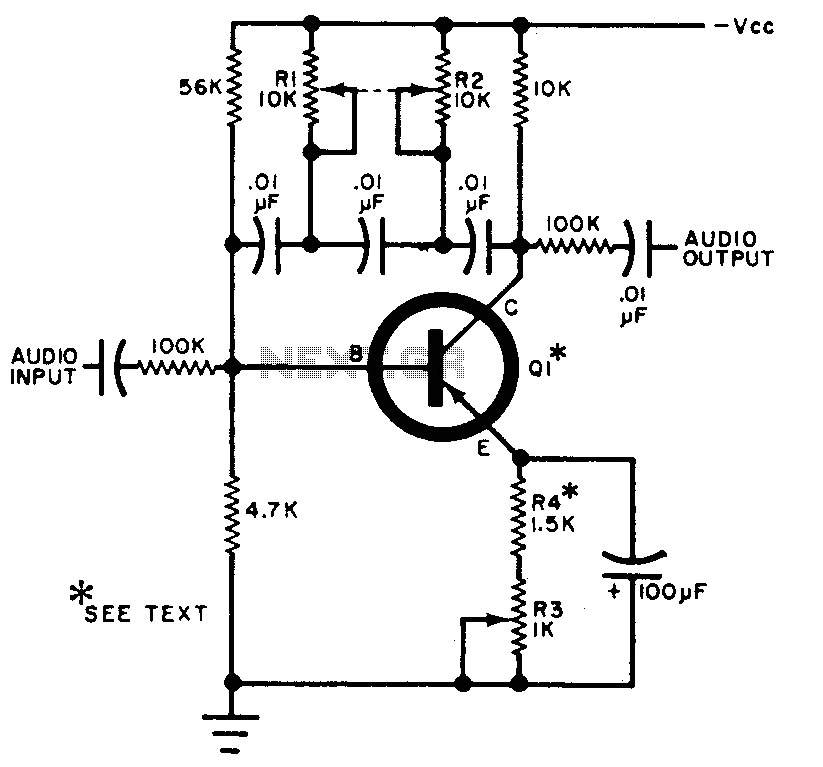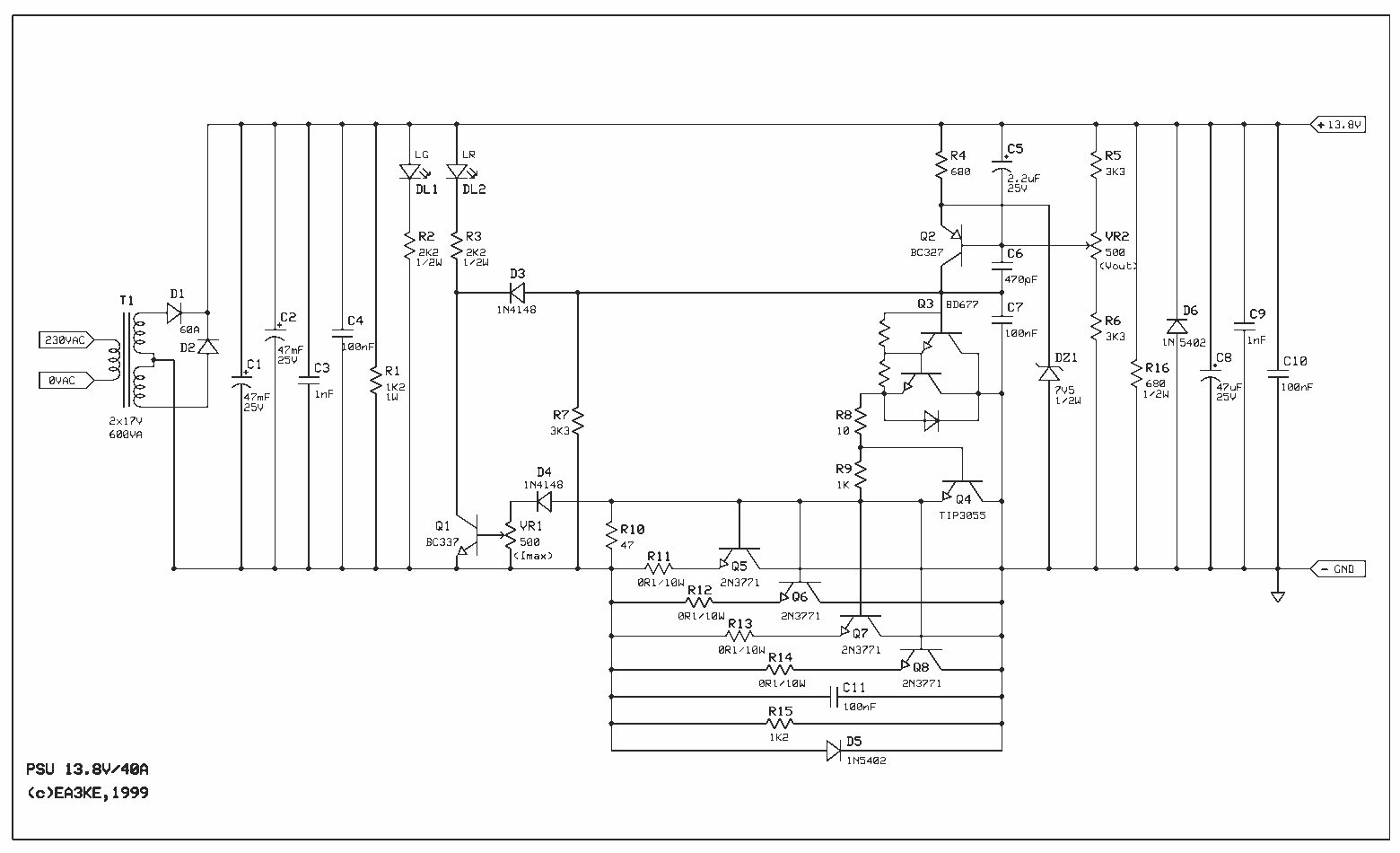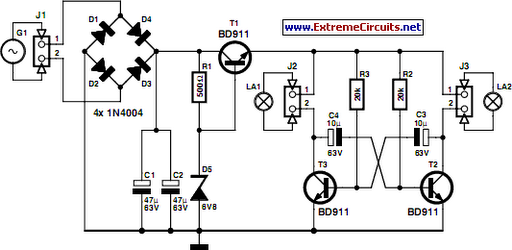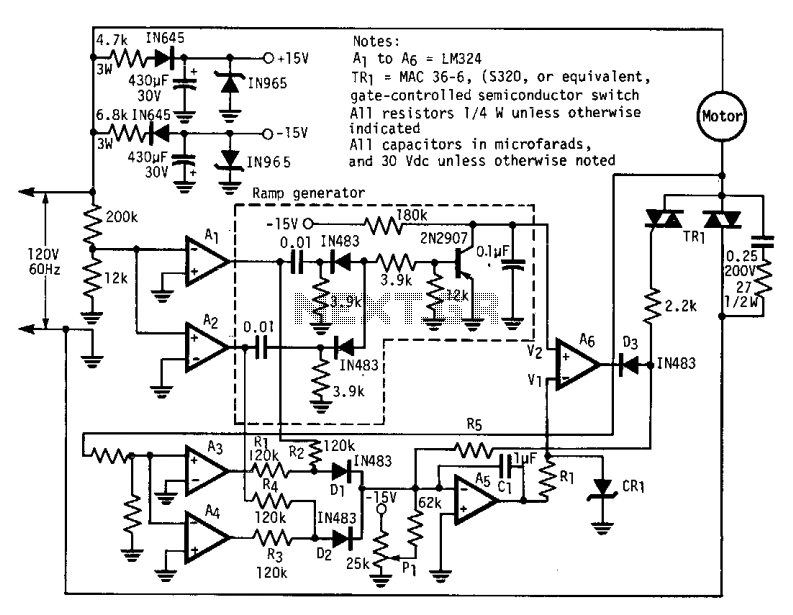
Power Controller (For Automotive Accessories) Circuit
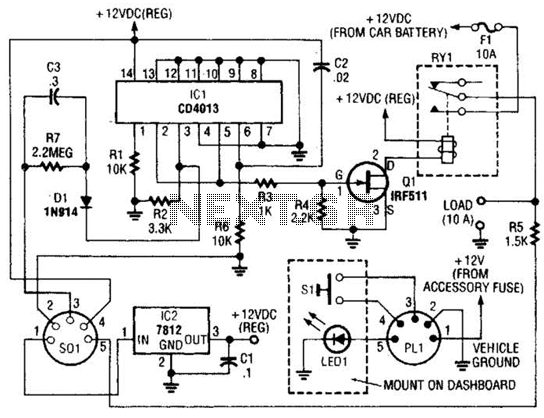
The power controller operates from the vehicle's accessory switch, allowing the load to receive power only when the ignition key is in the "on" position. A momentary pushbutton controls a load of up to 10 A using half of a dual flip-flop (CD4013). While this circuit was initially designed for automotive power management, it may also be suitable for other applications.
The described power control circuit utilizes a CD4013 dual D-type flip-flop, which is an integrated circuit commonly used in digital applications. The circuit is designed to provide a reliable method for controlling electrical loads in automotive settings, ensuring that power is only supplied when the vehicle is in operation.
The momentary pushbutton serves as the user interface, allowing the operator to manually engage the load. When the button is pressed, it triggers the flip-flop, which changes its state and enables the output to drive the load. The flip-flop configuration ensures that the load remains engaged until the ignition is turned off, preventing battery drain when the vehicle is not in use.
The load capacity of this circuit is rated for up to 10 A, making it suitable for various automotive devices such as lights, auxiliary power outlets, or other electronic accessories. The design can be adapted for other applications beyond automotive use, such as in home automation systems or industrial equipment, where control of high-current loads is required under specific conditions.
To implement this circuit, proper attention should be given to the power ratings of the components used, ensuring they can handle the load current without overheating. Additionally, the circuit should include appropriate safety features, such as fuses or circuit breakers, to protect against overload conditions. The use of appropriate wiring and connectors is also essential to maintain the integrity of the circuit and ensure reliable operation.
Overall, this power control circuit exemplifies a practical solution for managing electrical loads with safety and efficiency, while also offering versatility for various applications. Because the power controller is powered from the vehicle`s accessory switch, the load can receive power only when the ignition key is on. Using half of a dual flip-flop (CD4013), a load of up to 10 A is controlled by a momentary pushbutton.
This circuit was originally intended for automotive power control, but could have other applications as well.
The described power control circuit utilizes a CD4013 dual D-type flip-flop, which is an integrated circuit commonly used in digital applications. The circuit is designed to provide a reliable method for controlling electrical loads in automotive settings, ensuring that power is only supplied when the vehicle is in operation.
The momentary pushbutton serves as the user interface, allowing the operator to manually engage the load. When the button is pressed, it triggers the flip-flop, which changes its state and enables the output to drive the load. The flip-flop configuration ensures that the load remains engaged until the ignition is turned off, preventing battery drain when the vehicle is not in use.
The load capacity of this circuit is rated for up to 10 A, making it suitable for various automotive devices such as lights, auxiliary power outlets, or other electronic accessories. The design can be adapted for other applications beyond automotive use, such as in home automation systems or industrial equipment, where control of high-current loads is required under specific conditions.
To implement this circuit, proper attention should be given to the power ratings of the components used, ensuring they can handle the load current without overheating. Additionally, the circuit should include appropriate safety features, such as fuses or circuit breakers, to protect against overload conditions. The use of appropriate wiring and connectors is also essential to maintain the integrity of the circuit and ensure reliable operation.
Overall, this power control circuit exemplifies a practical solution for managing electrical loads with safety and efficiency, while also offering versatility for various applications. Because the power controller is powered from the vehicle`s accessory switch, the load can receive power only when the ignition key is on. Using half of a dual flip-flop (CD4013), a load of up to 10 A is controlled by a momentary pushbutton.
This circuit was originally intended for automotive power control, but could have other applications as well.
